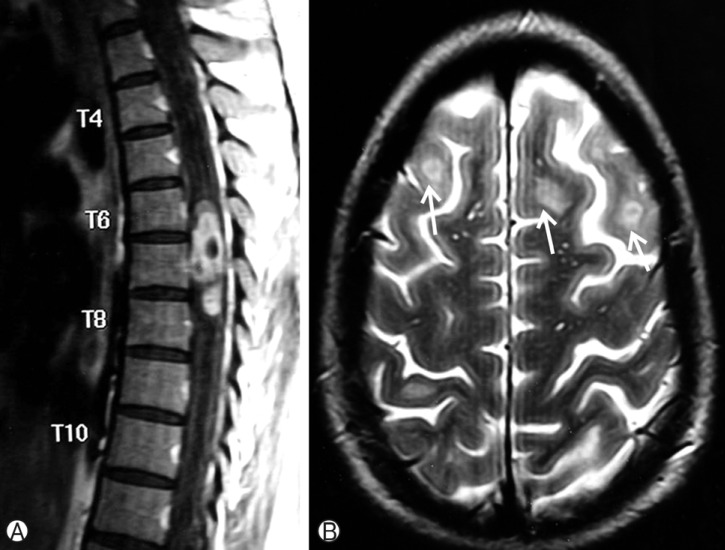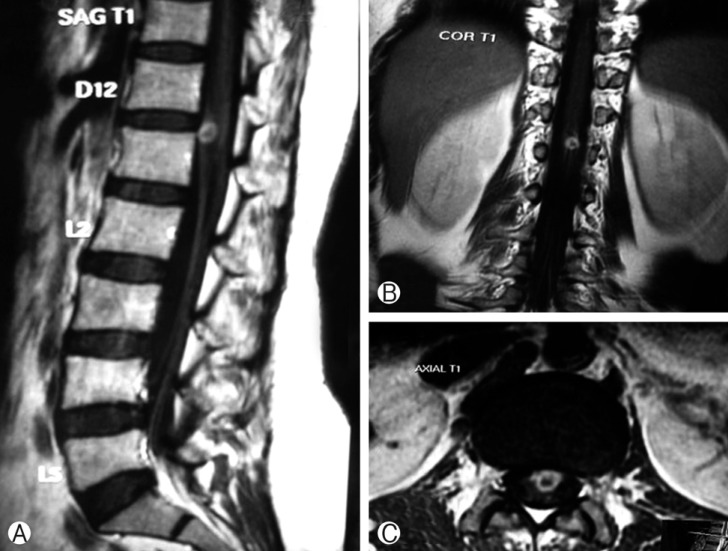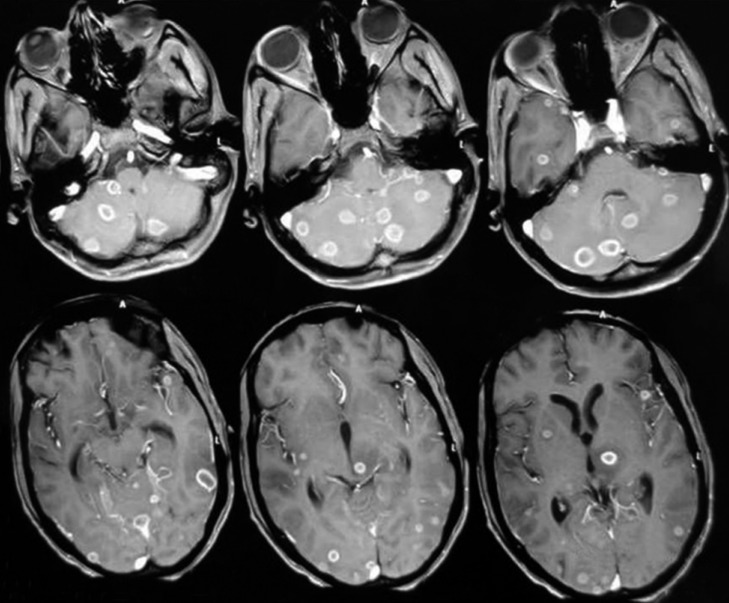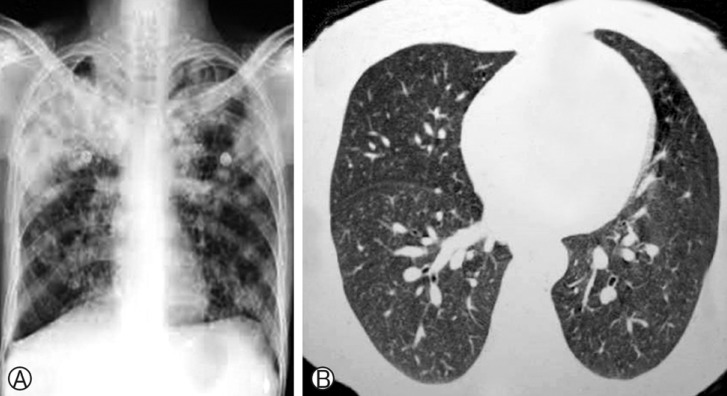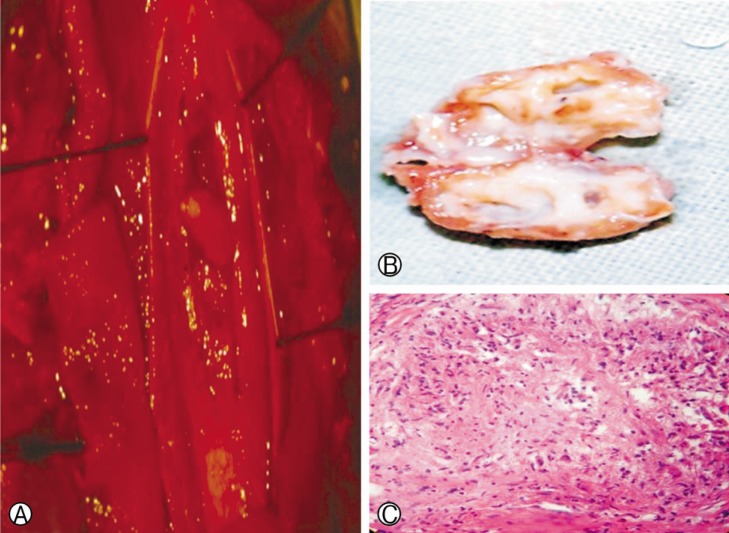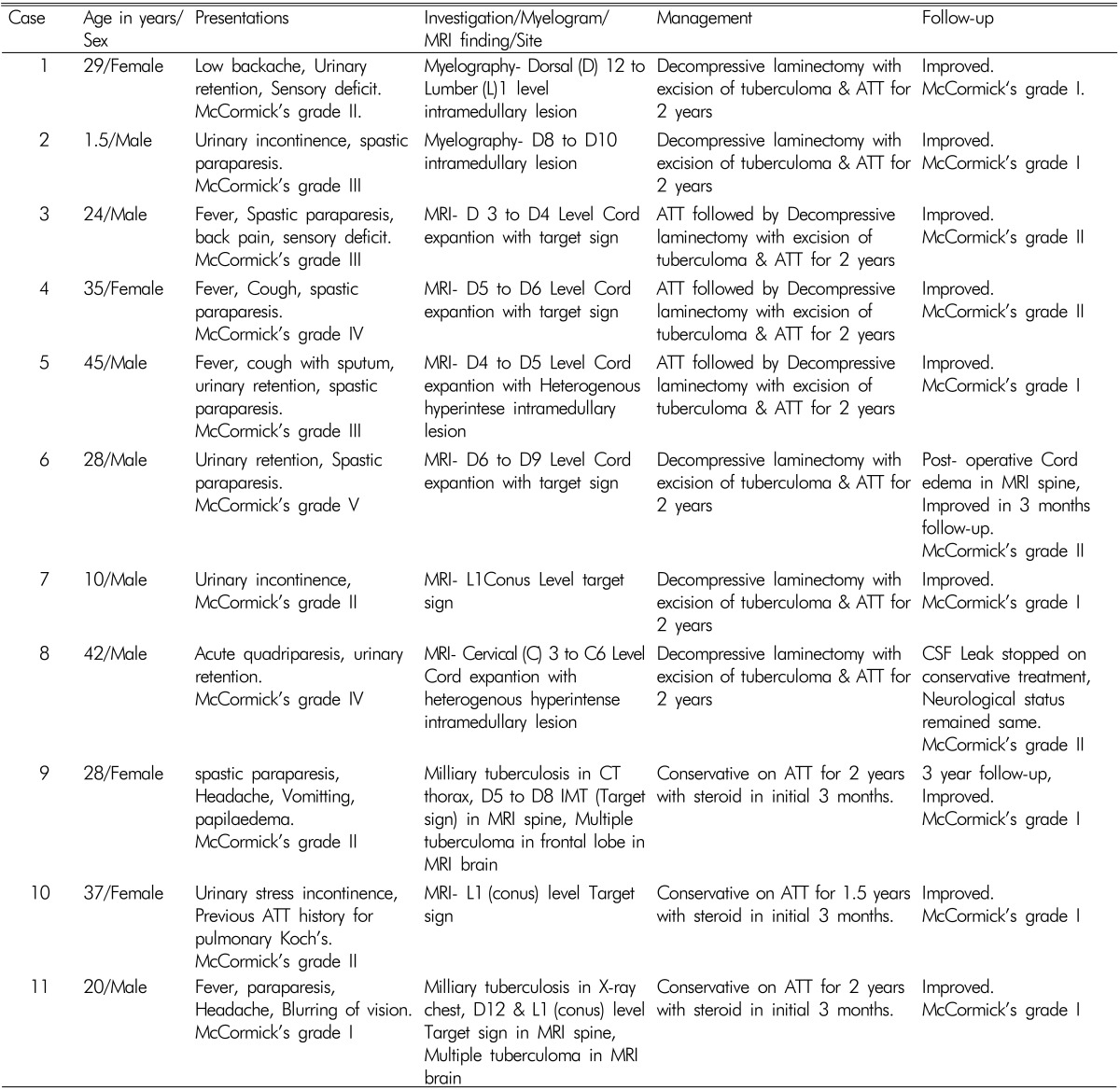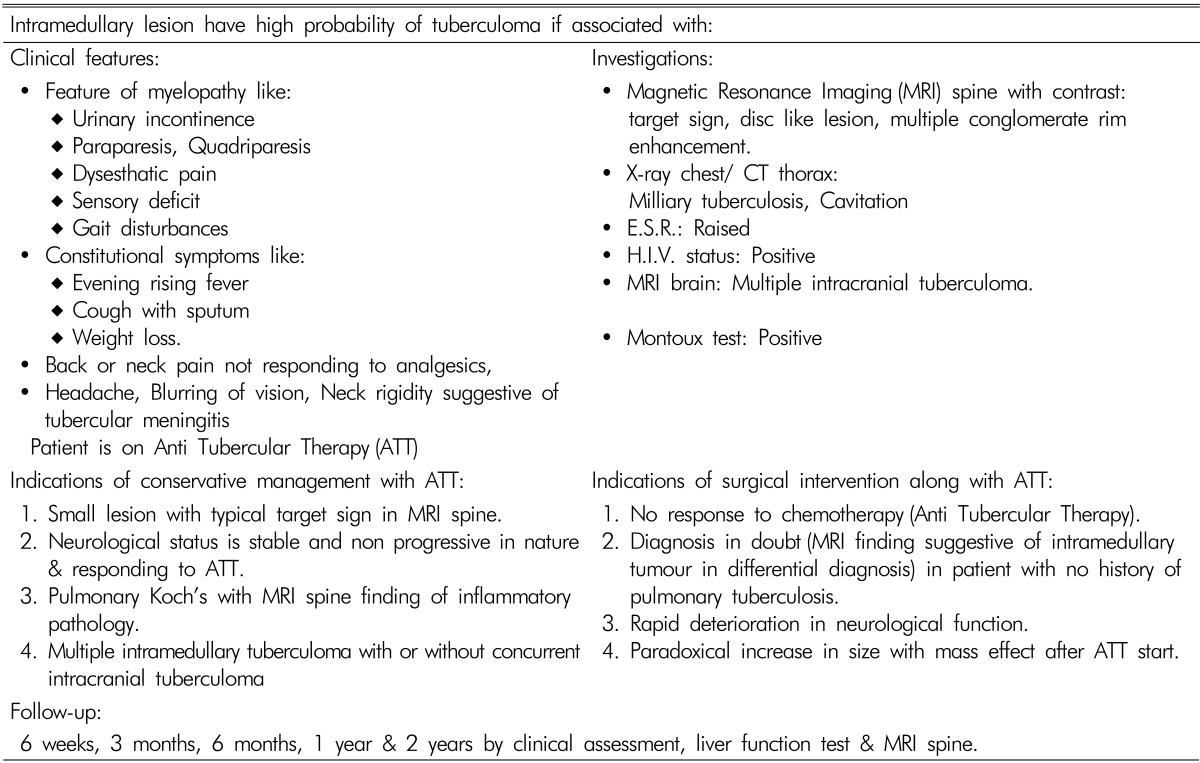1. Abercrombie J. Pathological and practical researches on disease of the brain and the spinal cord. Edinburg: Waugh and Innes; 1828. p.371-372.
2. Alessi G, Lemmerling M, Nathoo N. Combined spinal tuberculous empyema and intramedullary tuberculoma in an HIV-positive patient. Eur Radiol 2003 13:1899-1901. PMID:
12942291.


3. Arslantas A, Faruk A, Kismet B, Esref T. Intramedullary tuberculoma of spinal cord. J Postgrad Med 2002 48(1):54-55. PMID:
12082333.

4. Cascino J, Dibble JB. Tuberculoma of spinal cord. J Am Med Assoc 1956 162(5):461-462. PMID:
13357332.


5. Citow JS, Ammirati M. Intramedullary tuberculoma of the spinal cord: Case report. Neurosurgery 1994 35:327-330. PMID:
7969845.


6. Dastur HM. A tuberculoma review with some personal experiences: II. Spinal cord and its coverings. Neurol India 1972 20(3):127-131. PMID:
4570167.

7. Devi BI, Chandra S, Mongia S, Chandramouli BA, Sastry KV, Shankar SK. Spinal intramedullary tuberculoma and abscess: a rare cause of paraparesis. Neurol India 2002 50:494-496. PMID:
12577105.

8. Gupta RK, Gupta S, Kumar S, Kohli A, Misra UK, Gujral RB. MRI in intraspinal tuberculosis. Neuroradiology 1994 36:39-43. PMID:
8107996.


9. Gupta VK, Sharma BS, Khosla VK. Intramedullary tuberculoma: report of two cases with MRI findings. Surg Neurol 1995 44:241-244. PMID:
8545775.


10. Huang CR, Lui CC, Chang WN, Wu HS, Chen HJ. Neuroimages of disseminated neurotuberculosis: report of one case. Clin Imaging 1999 23:218-222. PMID:
10631897.


11. Jena A, Banerji AK, Tripathi RI, Gulati PK, Jain RK, Khushu S, et al. Demonstration of intramedullary tuberculosis by magnetic resonance imaging: a report of two cases. Br J Radiol 1991 64:555-557. PMID:
2070190.


12. Kobayashi R, Togashi S, Nagasaka T, Shindo K, Shiozawa Z, Yamada H, et al. Intramedullary tuberculoma with syringomyelia. J Spinal Disord Tech 2000 15:88-90. PMID:
11891462.

13. Lin TH. Intramedullary tuberculoma of the spinal cord. J Neurosurg 1960 17:497-499. PMID:
14417019.


14. Lin SK, Wu T, Wai YY. Intramedullary spinal tuberculoma during treatment of tuberculous meningitis. Clin Neurol Neurosurg 1994 96:71-78. PMID:
8187386.


15. MacDonnell AH, Baird RW, Bronze MS. Intramedullary tuberculomas of the spinal cord: case report and review. Rev Infect Dis 1990 12:432-439. PMID:
2193350.


16. McCormick PC, Stein BM. Intramedullary tumours in adults. Neurosurg Clin N Am 1990 1:609-630. PMID:
2136161.


17. Mohit AA, Santiago P, Rostomily R. Intramedullary tuberculoma mimicking primary CNS lymphoma. J Neurol Neurosurg Psychiatry 2004 75(11):1636-1638. PMID:
15489405.



18. Muthukumar N, Venkatesh G, Senthilbabu S, Rajbaskar R. Surgery for intramedullary tuberculoma of the spinal cord (report of 2 cases). Surg Neurol 2006 66:69-74. PMID:
16793447.


19. Nussbaum ES, Rockswold GL, Bergman TA, Erickson DL, Seljeskog EL. Spinal tuberculosis: a diagnostic and management challenge. J Neurosurg 1995 83(2):243-247. PMID:
7616269.


20. Parmar H, Shah J, Patkar D, Varma R. Intramedullary tuberculomas. MR findings in seven patients. Acta Radiol 2000 41:572-577. PMID:
11092478.


21. Rao GP. Spinal intramedullary tuberculous lesion: medical management. Report of four cases. J Neurosurg 2000 93:137-141. PMID:
10879771.


22. Ramdurg SR, Gupta DK, Suri A, Sharma BS, Mahapatra AK. Spinal intramedullary tuberculosis: a series of 15 cases. Clin Neurol Neurosurg 2009 111(2):115-118. PMID:
19058910.


23. Ratliff JK. Intramedullary tuberculoma of spinal cord. J Neurosurg 1999 90:125-128. PMID:
10413137.

24. Shen WC, Cheng TY, Lee SK, Ho YJ, Lee KR. Disseminated tuberculomas in spinal cord and brain demonstrated by MRI with gadolinium-DTPA. Neuroradiology 1993 35:213-215. PMID:
8459924.


26. Thacker MM, Puri AI. Concurrent intra-medullary and intracranial tuberculomas. J Postgrad Med 2004 50:107-109. PMID:
15235204.

27. Torii H, Takahashi T, Shimizu H, Watanabe M, Tominaga T. Intramedullary spinal tuberculoma: case report. Neurol Med Chir (Tokyo) 2004 44:266-268. PMID:
15200064.


28. Yen HL, Lee RJ, Lin JW, Chen HJ. Multiple tuberculomas in the brain and spinal cord: a case report. Spine (Phila Pa 1976) 2003 28:E499-E502. PMID:
14652486.








